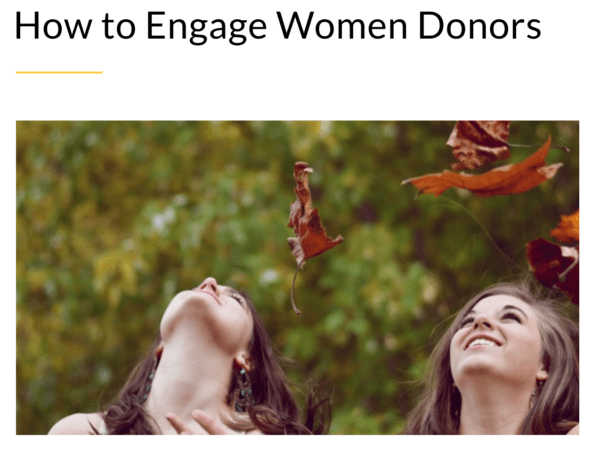To unlock the full potential of women’s philanthropy, fundraisers must understand how gender shapes giving behavior. Women and men give differently, and the Women’s Philanthropy Institute (WPI) has developed research that explores unique questions about the factors that shape gender-based giving patterns – including age, religion, income, marital status, and more.
“Fundraisers who adapt their practices to meet women as they prefer find they are raising more dollars, gaining new donors, and meeting their goals faster than expected,” says Kathleen Loehr, author of “Gender Matters: A Guide to Growing Women’s Philanthropy” and council member of the WPI.
Why is it important to engage women donors? You can find an infographic here, but some of the key reasons are:
- Women’s wealth is rising. Women’s share of wealth has risen considerably over the past 50 years and today they hold around 40% of global wealth.
- Women are more likely to give more. Across income levels and generations, women are more likely to give, and give more than their male counterparts.
- Women give differently. From motivations to causes to behavior, women and men demonstrate different giving patterns.
- Dollars are being left on the table. By taking a one-size-fits-all approach to fundraising, organizations are leaving critical dollars on the table and missing out on a major engagement opportunity.
“The time is now,” added Loehr. “We have important challenges in our society and women are the missing ingredient to accelerate the funding we seek.”
Here are five examples of how nonprofits and fundraising professionals can better engage women donors:
- Education, collaboration and planning are key. In a WPI study examining high net worth women who support women’s and girl’s causes, these donors described the critical need to thoroughly educate themselves before making funding decisions. Education comes in the form of conversations with other women donors, research, joining women’s funding groups and more. In fact, women donors are more inclined to work with others when supporting a cause.“Many women have a preference to collaborate, rather than act as individual philanthropists. This enables them to maximize the impact of their giving. It’s important for fundraisers to go beyond individual strategies and consider how they can tap into the strength of women’s networks.” – Kathleen Loehr
- Lead with empathy. Prior research has suggested that fundraising appeals that focus on helping others appeal more to women, and that men respond more to appeals that focus on tax breaks and other personal benefits of charitable giving.“Both men and women are motivated to give but for different reasons. As a result, marketing and communication needs to be tailored to reach the different audiences. A one-size-fits-all approach won’t always resonate with both men and women.” – Andrea Pactor, Interim Director, Women’s Philanthropy Institute
- Recognize that women give differently than men. WPI research on how women give shows that women tend to “spread their wealth” around, giving smaller amounts to a larger number of nonprofits than men.“Women fly under the radar in our wealth screenings and in our current capacity calculations. It is time to deemphasize traditional wealth ratings and bring back the open, curious first conversations with women about their values and all of their giving.” – Kathleen Loehr
- Engage with Giving Days and social media tools. Giving Tuesday and popular online giving days are a major opportunity to reach women donors. Women use social media more often, are more likely to participate in collaborative giving, and more likely to be volunteers (who give more often than non-volunteers). In 2016, women made up the majority of donations (63%) on Giving Tuesday.“For small nonprofits that may experience human and financial constraints, this is a wonderful opportunity to engage an ad hoc Millennial committee to help build out a robust online giving strategy that includes lots of stories about women’s motivations for giving and the impact of their gifts.” – Andrea Pactor
- Reach women across their various life stages. Single women are the only demographic group to increase their volunteering after retirement—a 4.7 percentage point increase. This finding may encourage fundraisers to consider how to expand volunteer opportunities and target retired female donors in increasingly creative ways.“Women weave in and out of philanthropy across their lives, depending on their life stage. At any stage they may use one or more of the Five Ts: time, talent, treasure, testimony, or ties. Is your organization using cultivation strategies to meet women in these various ways?” – Kathleen Loehr
